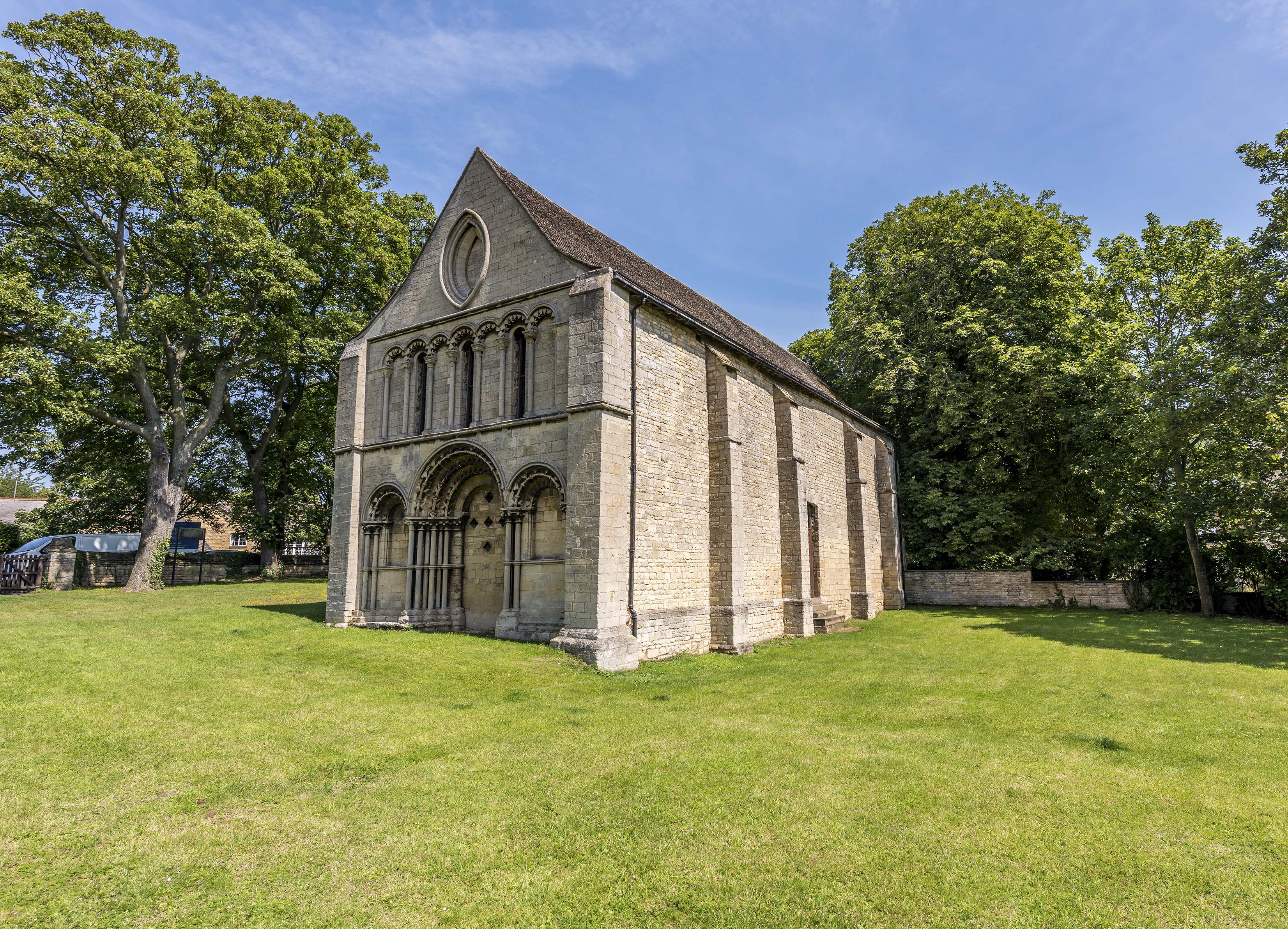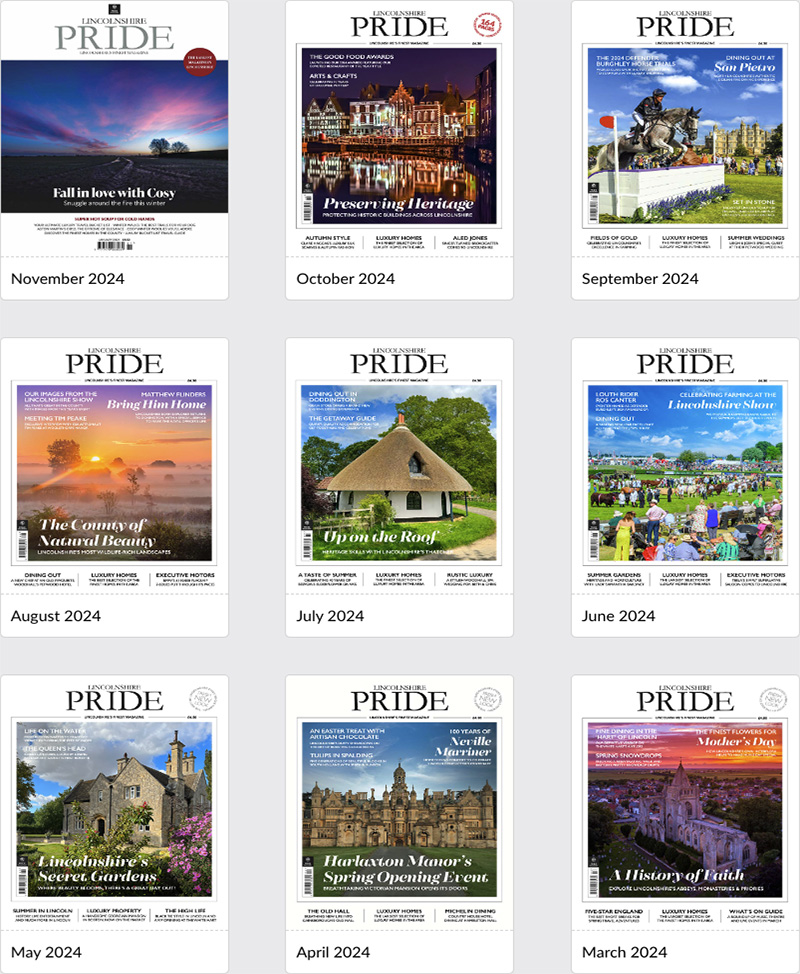
Stamford in Six Buildings…
In a town with 600 listed buildings, how do you pick the most interesting…? Author Chris Davies’s book might help. It’s a guide to Stamford’s 50 most notable buildings, we’re featuring just a few here…

Stamford has a reputation for being one of England’s finest stone towns. It has a happy mix of medieval and Georgian architecture that was untouched by the Industrial Revolution or later large-scale developments. But choosing fifty buildings from a town that can boast 600 listed buildings was never going to be an easy task when Chris Davies created his book on the most notable 50 buildings in the town.
“Many may disagree with those I have chosen and feel that their favourite building should have been included. My apologies for that!” says Chris. “But I at least hope that they will understand the rationale behind my particular selection. What I have tried to do is to show something of Stamford’s history through its buildings and the people who lived in them.”
Stamford in 50 Buildings explores the history of the town through a selection of its greatest architectural treasures, from medieval churches to picturesque town centre buildings. Burghley House is a given, so we’ve omitted that here.
“Stamford is not a museum, and its buildings reflect the age in which they were built. In more modern times, such building has not always been sympathetic to the surrounding buildings or the townscape in general – buildings erected, as Sir Neil Cossons put it, ‘with thoughtless haste and ill-considered imitation.’ Nevertheless, they are of their age, and we have to accept them as such.”
“I have therefore tried to select buildings that reflect Stamford’s long history, as well as having merit in their own right, 53 years since the town was named Britain’s first conservation area.”
1. St Leonard’s Priory…
With the exception of the Cistercians, most of the major monastic orders were represented in Stamford, and remained here until the Dissolution of the Monasteries between 1536 and 1541. The Benedictine order was represented by St Michael’s Nunnery, which lay to the south-west, just outside St Martin’s parish, and St Leonard’s Priory, which was a Benedictine cell of Durham. There is an element of confusion about a foundation date for the priory. The belief among earlier historians was that St Leonard’s was founded in the seventh century by St Wilfred. The first reliable reference to St Leonard’s is in the confirmation of Durham’s possessions by Pope Eugenius in 1146. The main function of the priory seems to have been to manage Durham’s estates south of the Humber, but in the early fourteenth century it also prepared students for study at Oxford. For many years the priory was part of the Burghley estate and to judge from early drawings, seems to have been used for storage by the adjacent farm. The priory is now in the care of SKDC, but in recent years Stamford Civic Society have taken a leading role in caring for the site.
2. Gothic House…
Its proper name is Gothic House, although you’ll probably know it better as Walker’s Books! There’s very little obvious timber-framing in Stamford, since much of what does exist has been hidden by later refronting. A case in point is Gothic House in High Street. The building probably dates from the sixteenth century and is a long, narrow plot running at right angles to the street. The early parts of the building are timber-framed, with a jetty down the west side. The passage that ran down the west side of the building was incorporated into the shop sometime in the 1960s. This effectively brought the outside wall of the jettied timber framed building inside, which can be clearly seen when ascending the stairs inside. The Gothic Revival frontage was added in 1849 and was described by the Stamford Mercury as a ‘fine specimen of the revived Tudor style.’ During the late eighteenth century the shop was occupied by Thomas Rayment, a clockmaker. There is a painted inscription on one of the collars in the roof space: ‘T Rayment 1788.’ Rayment went bankrupt in 1792 and the Mercury announced, in June of that year, that his stock was to be sold off at the Town Hall. The town post office was here for a time in the nineteenth century, and for a number years Gothic House was one of the many outlets run by Parrish & Sons, who were one of the town’s leading retailers.
3. Browne’s Hospital…
Browne’s Hospital was founded by William Browne, a wealthy wool merchant, and his wife Margaret in 1475. It was originally called Cleymont Hospital, after the area in which it was built. In the 1480s Browne and his wife decided to convert it into a family hospital, which was to be called the hospital of William Browne of Stamford. The hospital, which was described by Pevsner as ‘one of the best medieval almshouses in England,’ provided accommodation for ten poor men and two women under the supervision of a warden and confrater. We should, perhaps, be clear that the terms hospital, almshouse and bedehouse, were all applied to Browne’s hospital; it was not a medical facility in the modern sense of the word. Unusually, the building is of two storeys. Recent research by Nick Hill and Alan Rogers suggests that the building originally had two purposes: a hospital and a guildhall, the hospital being on the ground floor and the guildhall on the first floor. The ground-floor arrangement followed the medieval pattern of a communal hall with cubicles along each wall. In 1870 the hospital was considerably altered by James Fowler of Louth and accommodation for the inmates was provided in small cottages around a rear courtyard. Browne’s hospital still exists as a charity and provides accommodation for a number of elderly people.
4. Stamford Theatre…
Stamford Theatre is another of the town’s buildings which has a chequered history. Now part of the Stamford Arts Centre complex, the theatre was built by built by an Irish actor manager called James ‘Jemmy’ Whitley and local alderman and mason William Clarke, on land leased from the Earl of Exeter. The building was completed in 1768 at a cost of £806, opening on 14th March 1768 with a performance of ‘Love in a Village’ by Mr Witley’s own company of comedians. Whitley appears to have been something of an entrepreneur and worked a circuit system, which meant that he attracted some of the famous names of the day to Stamford. Local audiences, therefore, were able to see William Charles Macready, Charles Kemble, Mrs Siddons and Edmund Kean, to name but a few. The theatre also became indirectly involved in the town’s politics. It was the practice to induce people to vote for a particular candidate by giving them free tickets to the theatre. In September 1830 a ‘blue’ (drunkard) attempted to gain admission to the theatre and was refused admittance. A riot broke out and the doors of the theatre were thrown in the river. Following the Second World War, the building was put to a variety of uses. The United Nations Youth Group used it as a meeting place and the Stamford Horticultural Society held shows there. In 1970 the Stamford Mercury reported, ‘The old theatre was unlikely ever to be used again by actors.’ However, the Stamford Arts Centre Committee thought otherwise and, with foresight and a considerable amount of energy, they set about restoring it. The 170-seat theatre that was opened by the Duchess of Gloucester on 18th November 1978.
5. The Portico…
The Portico is the proper name of Stamford’s public library. This site was purchased by Stamford Corporation in 1801 as a site for the new butcher’s shambles. The portico was opened in 1808 to a design by William Legg. Stylistically, the building bears a strong resemblance to Inigo Jones’ St Paul’s Church in Covent Garden. An excellent description of the market appears in John Drakard’s book of 1822, where he wrote: “The south and principal entrance opening on to High Street through iron gates, forms the white meat market or butter market, and is a lofty portico that measures withinside fortyone feet by twenty-eight feet; it is supported by eight plain columns at the ends and by side walls, the latter of which are terminated by watch-houses, house for the beadle and other offices. At the back, or north side of this portico is the fish market, which has covered stalls on each side, and a large stone conduit or pump in the centre. This market forms a square whose side measures about fifty feet, and is separated from the Butchery by a double flight of ascending steps. As can be seen from the earlier photograph, this was an open portico supported on Tuscan columns. Drakard goes on to say that there were fifty-three butcher’s stalls.” The sides and front of the portico were later filled-in, and in 1906 it was opened as a library. For many years the town’s museum was situated on the mezzanine floor, before it moved to the old Technical Instruction School in Broad Street.
6. Stamford Castle…
Stamford Castle occupied a large area to the south of Sheepmarket on the crest and slope of the Welland Valley. Built shortly after the Norman Conquest and formerly a motte and bailey structure, Domesday Book records that five houses were demolished to make way for it. The castle was besieged twice and finally captured during the civil wars of the mid-twelfth century. It remained in use throughout the thirteenth century, but by 1340 was described as: ‘Old and the walls decayed; within are an old tower, a great hall, a chamber, with solar, a chapel, a turret and a house for a prison.’ The buildings continued to deteriorate, and by 1600 none remained. The outer wall on the corner of Bath Row and Castle Dyke, is all that now remains of the castle buildings. The motte was levelled in 1936 to make way for a bus station. During the medieval period the town was encircled by walls, enclosing an area of around 75 acres. Speede’s map of 1610 seems to indicate that there may have been as many as five bastions, although Leland has it that there were seven. While virtually nothing remains of the medieval walls now, the line of them can be traced through the present road and street pattern. The line is broadly preserved by West Street, North Street, Elm Street, Brazenose Lane and Wharf Road. The castle bailey was subject to an archaeological excavation in the 1970s prior to work starting on the housing development that now occupies the site.
Stamford in 50 Buildings is available from all good county bookshops published by Amberley Books. It has 96 pages and 120 illustrations, featuring 50 of Stamford’s most iconic buildings. Written by Chris Davies. £14.99, for information call 01453 847800 or see www.amberley-books.com.






